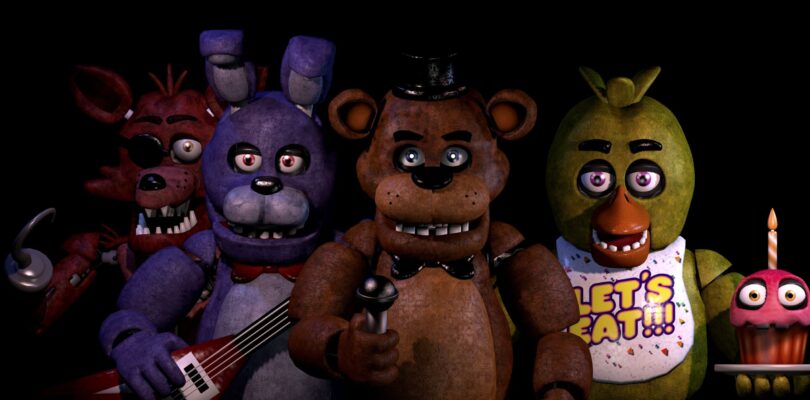Survive the night – if you can!
Let’s take a trip down memory lane. The year is 2014, and a man by the name of Scott Cawthon is having a bit of an existential crisis. You see, the gaming industry was giving him a hard time. A devout Christian, he tried his hand at several faith-based games, none of which became commercial successes. He then developed a run-of-the-mill family game Chipper & Sons Lumber Co. However, like his previous titles, it was not very warmly received. Criticism was aimed at the design of the characters, as they were deemed “creepy” and “animatronic looking.” At the end of his rope, he decided to give game design one last shot. He took the criticism of his character designs and turned it into his best asset. People said it looked scary even without him trying – so he wondered, what might he be capable of creating if he actually put effort into it? In 2014, the world would be introduced to the indie phenomenon Five Nights At Freddy’s.
The premise is this- a man down on his luck finally gets a job as a security guard for a pizza place. Seems like a cushy enough gig. However, one thing that was intentionally omitted in the job interview is that the place is haunted and has homicidal animatronic mascots roaming the halls at night. Our protagonist must survive for 5 nights and piece together the mystery as to why the mascots are trying to make a pizza with your blood as tomato sauce.
FNAF is a point-and-click survival-horror game. The gameplay is exceedingly simple. You don’t wander around, explore, or collect any items. You are a guard in his office and are completely stationary the entire game. The objective of the game is deceptively simple: close the doors…and that’s it. However, the real challenge lies in managing limited resources and monitoring threats. Players use security cameras to track the movements of animatronic mascots as they approach the office.
Note: Affiliate Disclosure: At PlayRatedGames, our content is made possible by our readers. If you purchase a game or product through links on our site, we may receive a small commission. This support helps us continue publishing honest, independent reviews. Our recommendations are based solely on what we believe offers real value to players — never influenced by affiliate partnerships.
Both camera use and door operation consume battery power, forcing players to strategize carefully. If a mascot manages to enter the office, the security guard meets a grim fate – and the game ends. As each night passes, the difficulty ramps up: the animatronics grow more aggressive and move with increasing speed. Despite its minimalist mechanics, the game becomes surprisingly intense and challenging, especially in the later stages.
For such a barebones game, the design is actually quite something. The entirety of the game is spent in the office. It’s a dank room covered in empty cups and bags of snacks, with posters reminding the employees to “Celebrate!”, quite the commentary on forced workplace happiness. The pizzeria itself is eerie and unsettling- the place is dirty and grimy and would fail a health inspection immediately. This juxtaposed with the actual theme of the Chuck-E-Cheese style restaurant: fun, partying, and all that other hoo-ha perfectly paints that this is all a facade with something much more sinister beneath the surface.
Is it scary? Honestly, not particularly. The fear factor relies more on sudden jump scares than sustained psychological horror. In terms of intensity, it’s comparable to something like Goosebumps or Are You Afraid of the Dark? – thrilling, but accessible. That said, this makes it the perfect entry point for younger audiences curious about the horror genre. Over a decade since its release, the game remains a fan favorite and is widely regarded as one of the most—if not the most – iconic titles in the indie gaming scene. Its massive success launched a franchise juggernaut, spawning multiple sequels, a book series, and even a feature film. All around FNAF has been lauded as an indie classic with a huge lasting impact. See where it all started, sit down, keep your eye on the camera and keep those pesky mascots out of the office.
Don’t blink,
Fil
Verdict: 8/10



Peyton
This sounds intense. I once played a similar horror game and the suspense was killer. Can’t wait to see if I can survive these nights!